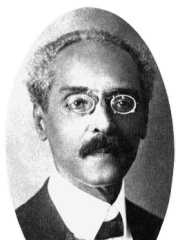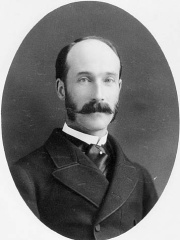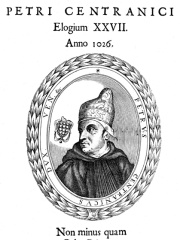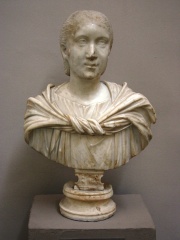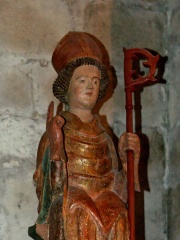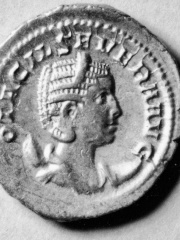POLITICIAN
Sponsianus
300 - Today

 Sponsianus
Sponsianus
Sponsianus, also known in English as Sponsian, may have been a Roman usurper during the third century. His existence is implied by a series of coins bearing his name, ostensibly part of a hoard excavated in the eighteenth century. No corresponding figure named Sponsianus is mentioned in any ancient sources, and the coins are widely believed to be the work of modern forgers. However, a study of wear marks on the coins published in November 2022 concluded that the coins were authentic, supporting Sponsian's existence as a historical figure. Read more on Wikipedia
His biography is available in 22 different languages on Wikipedia. Sponsianus is the 14,433rd most popular politician (down from 13,169th in 2024). (down from 3,428th in 2019)
Memorability Metrics
Page views of Sponsianus by language
Among POLITICIANS
Among politicians, Sponsianus ranks 14,433 out of 19,576. Before him are Federico Errázuriz Zañartu, Louis Borno, Redha Malek, Irina Khakamada, Cherie Blair, and Franjo Gregurić. After him are Ahmose Inhapy, Henry Petty-Fitzmaurice, 5th Marquess of Lansdowne, Pietro Barbolano, Giovanni Amendola, Sergey Ling, and Konstantios Doukas.
Most Popular Politicians in Wikipedia
Go to all RankingsFederico Errázuriz Zañartu
1825 - 1877
HPI: 56.57
Rank: 14,433
Louis Borno
1865 - 1942
HPI: 56.56
Rank: 14,434
Redha Malek
1931 - 2017
HPI: 56.56
Rank: 14,435
Irina Khakamada
1955 - Present
HPI: 56.56
Rank: 14,436
Cherie Blair
1954 - Present
HPI: 56.56
Rank: 14,437
Franjo Gregurić
1939 - Present
HPI: 56.56
Rank: 14,438
Sponsianus
300 - Present
HPI: 56.56
Rank: 14,439
Ahmose Inhapy
1600 BC - 1600 BC
HPI: 56.56
Rank: 14,440
Henry Petty-Fitzmaurice, 5th Marquess of Lansdowne
1845 - 1927
HPI: 56.56
Rank: 14,441
Pietro Barbolano
950 - 1032
HPI: 56.56
Rank: 14,442
Giovanni Amendola
1882 - 1926
HPI: 56.56
Rank: 14,443
Sergey Ling
1937 - Present
HPI: 56.55
Rank: 14,444
Konstantios Doukas
1060 - 1081
HPI: 56.55
Rank: 14,445
Contemporaries
Among people born in 300, Sponsianus ranks 80. Before him are Aphthonius of Antioch, Metrophanes of Byzantium, Julia Cornelia Paula, Austromoine, Marcia Otacilia Severa, and Fastida.
Others Born in 300
Go to all RankingsAphthonius of Antioch
WRITER
300 - 400
HPI: 58.67
Rank: 74
Metrophanes of Byzantium
RELIGIOUS FIGURE
300 - 326
HPI: 58.66
Rank: 75
Julia Cornelia Paula
COMPANION
300 - 300
HPI: 58.45
Rank: 76
Austromoine
RELIGIOUS FIGURE
300 - 300
HPI: 57.73
Rank: 77
Marcia Otacilia Severa
COMPANION
300 - 300
HPI: 57.48
Rank: 78
Fastida
POLITICIAN
300 - 300
HPI: 57.03
Rank: 79
Sponsianus
POLITICIAN
300 - Present
HPI: 56.56
Rank: 80

